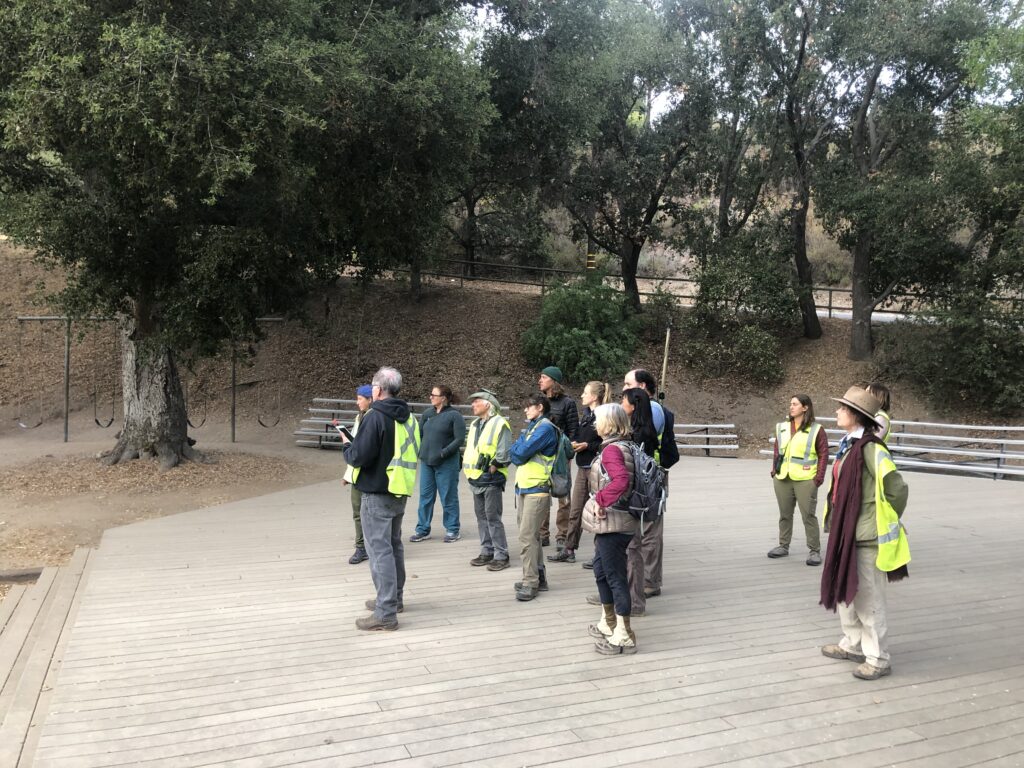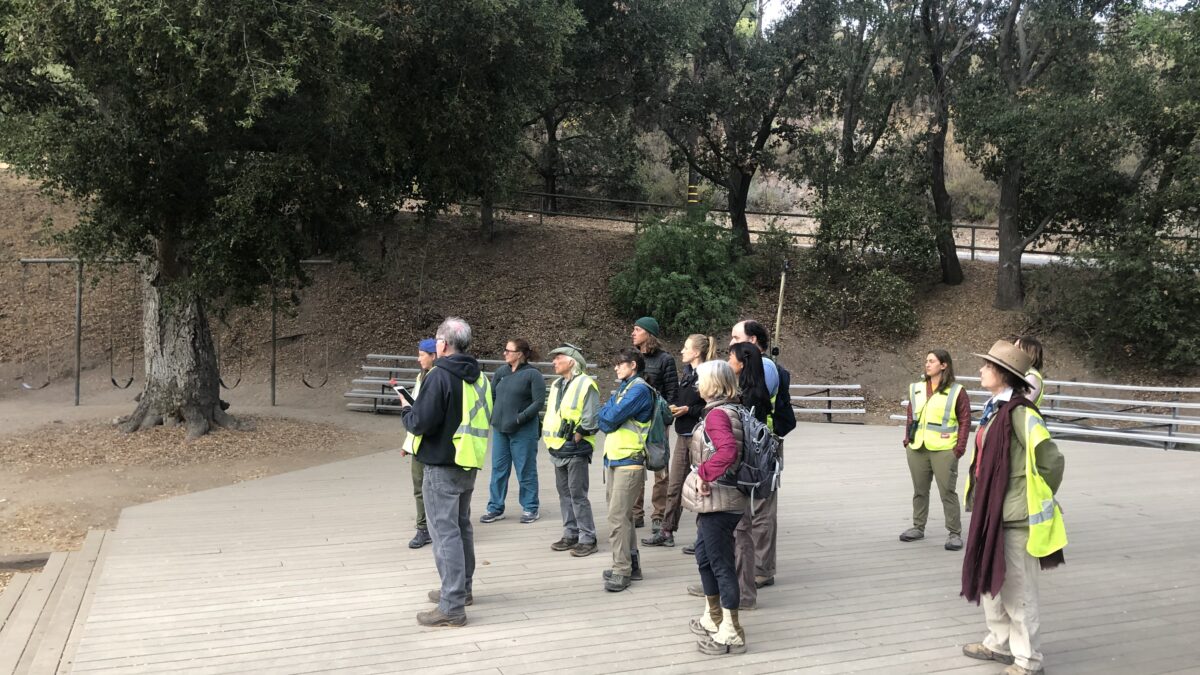New research reveals that Topanga is home to 14 bat species—twice as many as previously known, and the new finds include several rare and unusual species. Rosi Dagit, the Senior Conservation Biologist for the Resource Conservation District of the Santa Monica Mountains, shares how the local bat population was studied and identified.

While bats often are a focus around Halloween, the Resource Conservation District of the Santa Monica Mountains bat survey actually took place in June, when many species are here to feed and raise their young. With direction from Bill Haas, Director of the Central Coast Bat Survey, a team of 12 enthusiastic bat fans helped figure out what species are currently present in the Topanga Creek Watershed. Our last bat surveys were in the early 2000’s before our current drought and prior to when newer, more sophisticated detection tools were available.
Our surveys in 1999-2000 were mostly visual, although we were able to set up mist nets to identify the bats roosting in our bridges as mostly Mexican free-tailed and big brown bats. In 2021, thanks to funding from the State Coastal Conservancy, we were able to survey the area around the proposed Topanga Lagoon restoration area using current state-of-the-art ultrasonic recording hardware. Bill also offered to bring along extra tools that volunteers could use to better understand how species composition near the coast might differ from areas in the upper watershed.
After setting up passive detectors that continuously record bat conversations from dusk till dawn at two locations in the lower state park and lagoon restoration area, Bill took the volunteer team into the field at Big Rock Ranch armed with backpack detectors and iPads that both recorded and provided real time information about our local bats. After learning a mobile survey protocol—walking slowly, keeping ears open (yes, some bats are actually human-audible) and eyes peeled (for safety and for bats)—we set out on our first bat hikes. Teams of two to three volunteers took turns visiting Edelman Park, Trippet Ranch, Red Rock Park, and the Rodeo Grounds and Narrows.
Using detectors and visual surveys we documented the presence of canyon, hoary, pallid, California, and Western mastiff bats in the central part of the watershed, in addition to Mexican free-tailed, canyon, and big brown bats.
Thanks to the evening hiking help of Claire Sanders, Danielle LeFer, Kara Kemmler, Esther Feldman, Brianna Demirci, Renata Pompelli, Wei Chen, Brian Fullner, Lucinda Mittleman, Isaac Yelchin, Steve Williams, and Ken Wheeland, we were able—through a week of nightly surveys—to identify seven more species, including spotted, silver-haired, Western red, Western small-footed, Yuma, and big free-tailed bats. This doubled our list of species detected! Over 1,800 individual calls were detected in the lagoon area alone.
While most of the calls were from the more abundant Mexican free-tailed and canyon bats, both of which were found throughout Topanga Canyon, some of the species we detected are rare, including the Western Mastiff Bat, which likes to roost in rocky outcrops and cliff faces that overhang creeks. This is the largest bat found in North America and it is a California species of special concern, as is the Western red bat.
We recorded surprisingly few calls of the Yuma bat, a locally common species but one that is often associated with open water habitats. Its limited detection is possibly related to the current drought. Bill found this species the most common species in and around nearby open water sites (for example, at Malibu Lake and along Las Virgenes Creek), habitat types that are currently lacking in our canyon.
Bats play a big role in our watershed; their feeding on moths and other insects keeps the local populations in check. Many of our bat species roost in trees (for example hoary, Western red, silver-haired, California, and Yuma bats). Maintaining and restoring our riparian sycamores, alders, willows and oaks is critical to supporting bat populations.
Other species favor rock outcrops and canyon walls (Western mastiff, canyon, and Western small-footed bats). Preservation and protection of these features likewise contribute to bat conservation.
A few of our other species are more “cosmopolitan” (big brown and Mexican free-tailed bats) and roost in a broad assortment of habitats, including bridges and buildings as well as natural features and habitats. Based on the data collected during this survey, it appears that our population of Mexican free-tailed bats that roost under the bridges may be declining, especially the former maternity colony at Hillside Bridge, which has not recovered since the bridge was repaired about 10 years ago. Reduced stream flows due to the on-going drought may also contribute to our bat population declines as well.
The Resource Conservation District of the Santa Monica Mountains is working with California State Parks to restore the riparian woodlands in lower Topanga at the former Rodeo Grounds, as well as the oak woodlands in Trippet Ranch. The potential lagoon restoration provides an opportunity to improve foraging opportunities for bats by expanding the native tree cover. TNT readers can help with these restoration projects by signing up to volunteer at www.rcdsmm.org.





